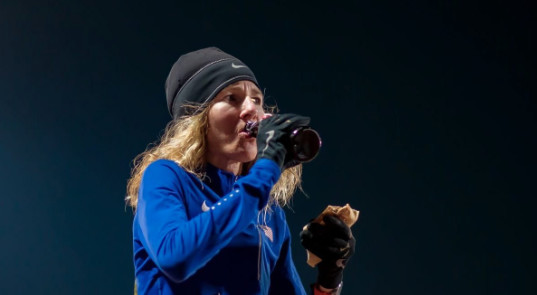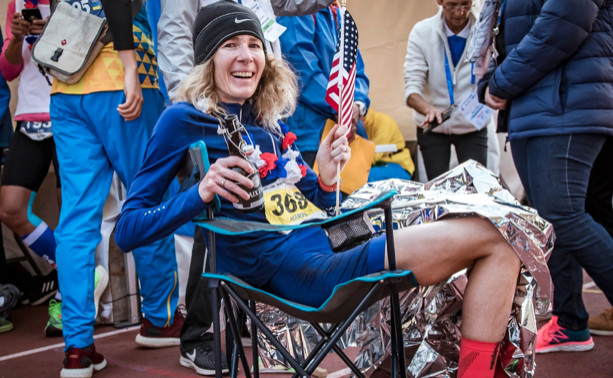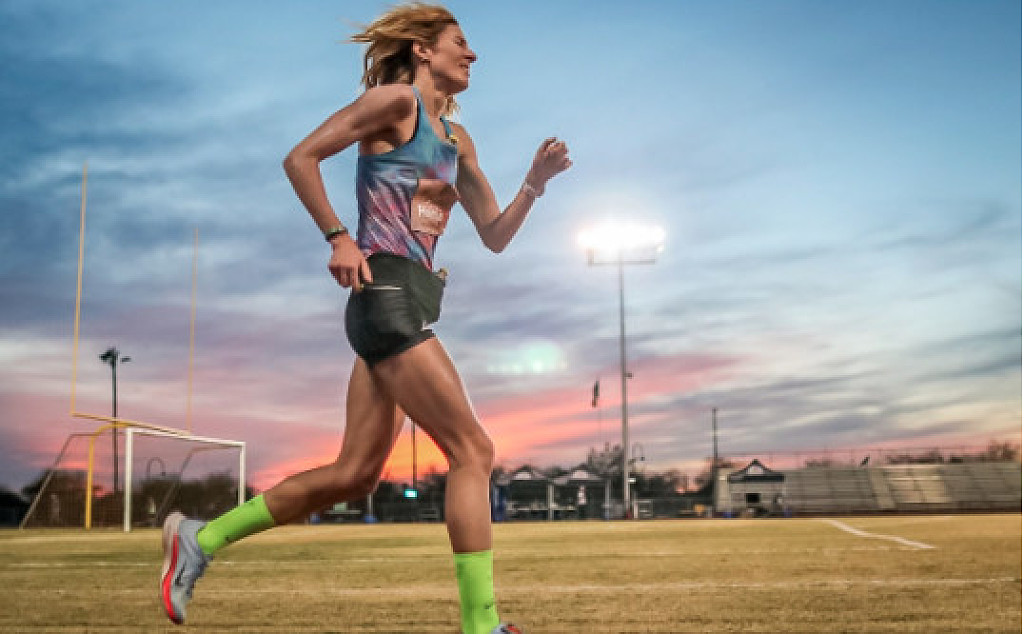Running News Daily
Running News Daily is edited by Bob Anderson. Send your news items to bob@mybestruns.com Advertising opportunities available. Train the Kenyan Way at KATA Kenya and Portugal owned and operated by Bob Anderson. Be sure to catch our movie A Long Run the movie KATA Running Camps and KATA Potato Farms - 31 now open in Kenya! https://kata.ke/
Index to Daily Posts · Sign Up For Updates · Run The World Feed
'I puked, fouled myself and collapsed - it was great': Meet the record-breaking ultra marathon runner fuelled by beer and burritos
At the ultra running World Championship, competitors looped a 1,500 metres circuit continuously for 24 hours and, with time running out, American Camille Herron was suffering.
She had thrown up twice, stopped to lie down twice, and had such serious bowel issues the officials had forced her off the course to shower and change her clothes. By the finish Herron had run 168 miles, the equivalent of running 6½ consecutive marathons, each in an average time of 3 hr 44 min.​

She certainly means it when she says: “I want to change what people think is possible. Especially for women.”​
Herron’s feat was a world record, she finished sixth in the race overall (including the men) and moved to third best on the United States all-time list for both genders. To get there she had to endure multiple setbacks.​
“I was trying this new fuelling plan with this new product and it wasn’t going well,” Herron explains. “The race was in France, so most of the rest rooms were squat toilets. For 350 athletes, they only had three normal toilets.”​
On her third bathroom stop in quick succession, she found a queue of athletes so decided to carry on. “But on that lap my bowels sort of unleashed themselves,” she says, laughing about it now. “But this is ultra running. S--- happens. Literally!”​
She switched her food to cups of mashed potato, makeshift burritos and her secret weapon – beer. Her condition did not improve but then a switch flicked in her mind.​
“After puking the second time, with 2½ hours to go, I just said to myself, ‘Let’s drop the hammer, let’s go beast mode’.”​

Herron started to fly. “I like to think of myself as a boxer, throwing punches,” she says. “Those last few hours were awesome, the most fun I’ve ever had in a race.”​
Surely she doubted, during the low moments, that it would all come together so spectacularly?​
“No,” she says. “I had already accepted before the race that I would be challenged. So at no point did I feel defeated. It was like ultra chess, we had to brainstorm how to deal with the problems. In the night, that’s the hardest part, because the brain is shutting down, so you’re trying to keep the light on.”​
Herron discovered the benefits of beer by accident. “I was in a trail race, really struggling, sitting in a chair. I’d tried everything and it wasn’t working and my husband just said, ‘You want a beer?’ I popped out of my chair after that. It got my blood flowing again.”​
During her latest world record she downed three Belgian beers along the way. “It settles my gut and helps me focus,” she laughs.​
Herron’s achievements are all the more astonishing as she has had to overcome a lopsided body, re-teaching herself how to run after years of injuries. She was born with her right thigh bone twisted inwards and has an extra bone in her right foot. “There’s something developmentally quirky about how I’m built,” she says. To reduce the strain on her body she re-learnt to run lifting her legs from the ground rather than pushing off. It means she looks like she is roller skating rather than running. “It’s like I’m prancing,” she says. “But I’m light on my feet. As a marathon runner, I had a great engine but I wasn’t fast enough because I wasn’t powerful. But as there’s less impact, for ultras it has turned out to be an advantage.”​
Since readapting her style, Herron has had only one injury, following a serious accident in February in which her car flipped upside down.​
Her steel was instilled from an early age. Herron’s grandfather was shot in both legs in the Second World War and awarded two Purple Heart medals, which are given for members of the US military wounded or killed while serving. He and Herron’s father were also basketball players under tough Olympic coach Henry Iba.​
“You had to be hard-nosed to play for him,” she explains. “My dad told stories of playing for six hours straight without water. So at age seven, I used to play in the yard, without water, until I blacked out. Then I’d get a sandwich and play some more. I was thinking, ‘This is what I got to do, push myself to extremes’. I was training for ultras without realising it.”​
Another formative event came when she was 17 and her whole family were made homeless by the strongest tornado ever recorded.​
“We get tornadoes all the time in Oklahoma,” she recalls, “so when we left the house I didn’t take anything. But it was crazy, four people in our area lost their lives, our house was flattened. But though we lost everything, I thought: ‘I’m still alive.’ At 17, that’s a big thing to realise, the value of your life. It changed my perspective.” From then on she started running on Sundays instead of going to church, to celebrate her life.​
Herron now believes that she can eventually chase down the men’s ultra running world records and she is partly driven by the inequality she feels is rampant in the sport. The normally upbeat Herron turns serious as she recounts her struggles for recognition in ultra running.​
“In my breakout year in 2015 I won two world titles and broke a world record and I thought I should get an agent,” she says, “but he couldn’t find me a sponsor. Then Jim Walmsley [a top male US runner] dropped out of Western States [a big US race] and I caught him in the world 100km championships, and he gets sponsored by Hoka. I was p----d.”​
She fired her agent and joined Walmsley’s agent, who eventually got her a sponsorship deal with Nike. Recently she was left fuming after a race in France offered prize money for the top 20 men, but only the top five women. And the women’s race was half the distance.​
“Sometimes it’s like a throwback to the 1970s,” she says. “I can’t believe it’s 2019 and women are still fighting for equal prize money. While everyone looks at the men like they’re superstars, I see people looking at me and tutting. I’m pretty tall, and I run aggressively and people don’t like it. I hear them saying, ‘She’s going out too fast’. So it’s a big motivation for me to run faster. To beat the men.”​
The way she is going, she might end up leaving them all behind. They can collect up her beer bottles when they come by.
Login to leave a comment




